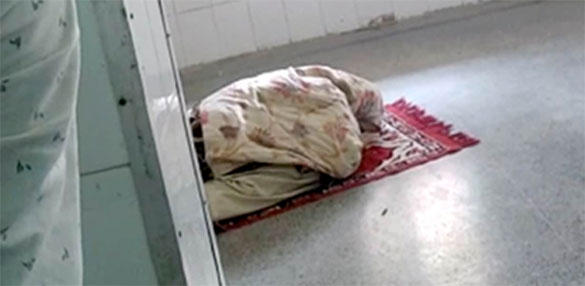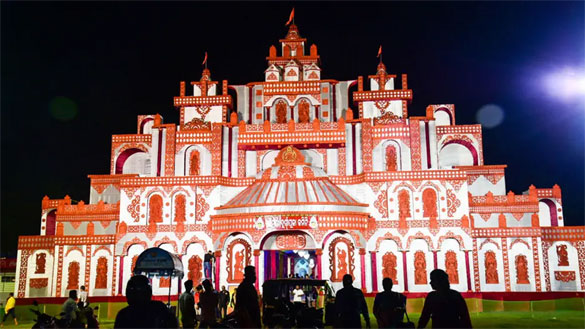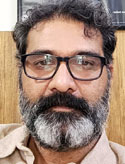By Arshad Alam, New Age Islam
6 December 2022
Those In India Wishing To Obliterate Muslims Need To Learn From History And Give Up This Pointless Fetish
Main Points:
- Every week, there is some video singling a Muslim who is praying in a mall, hospital or a train
- Sections of Hindus circulate the video with a malicious motive, expressing horror, as if this is a new thing in India
- Hindu religious functions too are celebrated in public; in a sense all Indian religions resist privatization
- Why then, this attempt to single out Muslim ritual practice? Is it an orchestrated attempt to push Muslims and their religion to invisibility?
- But even if this happens, will the Muslim presence be truly gone from the artistic, cultural, linguistic and sartorial common sense that defines India?
——

Namaz By Patient’s Attendant At Hospital Goes Viral, Police Say Probe On/ Photo: NDTV
—-
It is as if being a Muslim has become a crime in India. Not a week passes when we don’t hear the news of some Muslim being hounded simply because he or she was praying in a corner of a hospital, mall or within a train compartment. This is not to say that I am fine with Muslims blocking highways and disturbing traffic for Friday prayers, or at other occasions. In fact, I have written against it and will continue to do so in the future. If the issue is of limiting public presence of religious rituals, then I am all for it.

The Gigantic Puja Pandal In Baramunda, Bhubaneshwar
—–
But in India, Muslims are not the only community who want to display their religiosity. Hindus and other religious communities are probably better at orchestrating this feat. The various pujas which hold any city to ransom being just one example. If we include the night-long high-decibel Jagrata (night vigil) that gets organized routinely in all neighborhoods, then it will not be an exaggeration to say that Hindu display of religiosity is a round-the-year affair. Such displays and the occupation of public space hardly gets any negative attention, while a lone Muslim praying at the corner of a pavement does have to put up with disdain. Chances are that someone will make a video of this Muslim and post it on the internet so that he gets condemned by a very organized cabal of right-wing Hindus. How does a Muslim man praying in some corner of a train or road, or a hospital, disturb the public at large? If anyone catches a train from Delhi to Aligarh, they will find daily commuters singing loud Bhajans but I am yet to see any such video being circulated.
The lesson is very clear and it is not about lessening the public presence of religions. Rather it is simply about being discomfited by the public presence of Muslims. It is clear that a section of Hindus increasingly has a problem with the public presence of Islam and Muslims. This explains the alacrity with which the police swing into action at any such reported instance of Muslim religious display. And we certainly know that the police don’t act so swiftly without the approval of the government of the day. Many of these state governments have in fact advised Muslims to pray inside their homes and mosques (not on roads) but have been silent on similar transgressions from Hindus. These things were unthinkable some decades ago; but it appears that as we continue to move in this direction, perhaps Hindus will start to have problems with routine Muslim religious practices, like Eid prayers, which have always been held in public.
This is nothing but a desire to domesticate Islam, a religion which due to its very character has always been public since its inception. It refuses to be domesticated, even within Muslim countries like Turkey and Algeria, despite top-down attempts to do so. But today in India, we seem to have reached a stage where calls to its domestication are not enough; there are sections within the country who would be very pleased to have dispensed with the religion altogether. How else do we understand the alacrity with which such videos are being shared. The sole reason perhaps is to make Muslims uncomfortable performing their rituals in public. In other words, the very public presence of Muslim rituals is making a section of Hindus go ballistic.
Let us imagine a possibility where this section succeeds in making Muslims invisible from the public square. Imagine that there are no sartorial markers or beards or burqa on the Indian street. Imagine that every Muslim only prays either inside his house or inside a mosque. Imagine even Eid and Muharram festivities have been confined to designated spaces. Would this section of Hindus be happy then? Perhaps not. Then they might have a problem with the very presence of Muslims in the country. What if they start demanding that all physical structures of the Islamic faith be demolished? That all mosques and Dargahs should be demolished? What if they start demanding that Muslims have no place in this country; that they should simply leave India and migrate.
Now imagine that they have succeeded in achieving this feat. There are no physical markers of Muslim presence in India; there are no Muslims to be seen around. Would that make this country Muslim-free? Certainly not. What are these Hindus going to do about hundreds of years of Muslim history: a history which has been instrumental in weaving the fabric of this country in many ways. What are they going to do about language, which has words that can be traced to Urdu or Persian or Arabic or Turkish. Would these Hindus stop uttering the word sabun (soap), which is Persian in origin and hence associated with Muslim? Would those who grace the Indian Parliament stop wearing the traditional Kurta-Sherwani and revert back to being bare bodied, as practiced by Gandhi? Would they stop using spices, many of which were sourced from Muslim lands? Arguably the only good vegetable authentically Indian is brinjal; are they willing to base their feasts on that? More importantly, what will they do about time? Will the Hindu civilization revert back to its cyclical notion of time and devise a unique calendar to carry on the business of the state?
One country in the world tried that. Spain tried to get rid of its Muslim past. It failed. Despite its best efforts, they could not expel the Muslim presence from within their midst. Their language is heavily indebted to Arabic, their cuisine more so. Ferdinand and Isabella might be heroes to the evangelicals, but Spain today is not just about the marriage of these two but much more; it is about the confluence of European and Muslim cultures that can be witnessed in their art, culture, cuisine and language.
Those in India wishing to obliterate Muslims need to learn from history and give up this pointless fetish. Centuries of acculturation do not get washed away; they become part of the habitus of a culture, a civilization. The Muslim is inside every Hindu, as is a Hindu inside every Muslim. Hatred against Muslims is nothing but hating one’s own self. Sections of Hindus need to stop and think about the source of this self-hate and find ways to heal itself.
The Muslim presence in India will continue even without the physical presence of even a single Muslim.
—–
A regular contributor to NewAgeIslam.com, Arshad Alam is a New Delhi based independent researcher and writer on Islam and Muslims in South Asia.
URL: https://newageislam.com/interfaith-dialogue/indian-muslims-namaz-pandal-jagrata/d/128568

